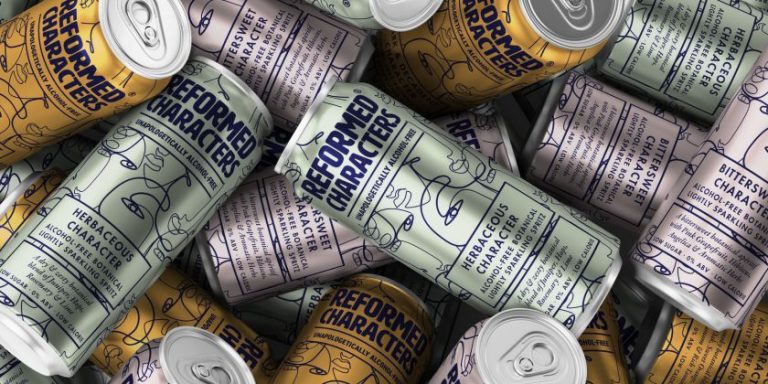Image licensed via Adobe Stock
We asked the Creative Boom community what tools save them the most time and effort, and here’s what they had to say.
It doesn’t matter how talented you are in your chosen creative discipline; that’s only half of the work of being a successful freelancer. The other half is about staying organised and productive so you can deliver everything on time and get paid promptly. And that’s more important than ever during the current cost of living crisis.
Talk to a freelancer who’s got that sorted, and you’ll probably find they have a suite of productivity tools that help them achieve this with minimal fuss. And so if that’s not the case for you, you’re probably missing a trick.
Ask yourself: how many hours a week could you save if you started using better tools? And then think about how much extra money you could make. (It’s probably a lot. Certainly enough to dwarf the amount you’d pay for subscriptions to said tools.)
But staying on top of the latest productivity tools and software, spotting new ones that could help you out, and trying them out for size are all tasks that we keep putting off for another day. So, to get you started, we turned to the creative community to crowdsource some recommendations.
Our list below includes both new tools and oldies-but-goodies. All of them can help you streamline your workflow, increase efficiency, and better manage your freelance venture. And we know they work in practice because, hey, why else would your fellow creatives recommend them?
Meanwhile, you can check out the full Twitter thread here.
1. MyMind
Do you waste much time staring at a blank page or screen, not knowing how to start? Then here’s a tool that can help you get over that hurdle in future.
MyMind is an application designed specifically for creative professionals to capture ideas, inspiration and things you want to read later, all in one organised place, while also building a searchable personal knowledge base.
We also love that MyMind is a small independent company run by creatives. “We never raised money,” they say. “We’re focused on building a strong and sustainable company.”
In a nutshell, MyMind helps spark creativity and new connections between saved content. Content creator Luke Taylor uses it “for inspiration and saving anything I find cool or interesting to read”.
2. Standards Site
New to create brand guidelines? Then here’s a recommendation from graphic designer Aaron Phelan.
Standards Site is a system that helps you build style guides and brand guidelines easily and quickly. It also automatically exports assets, enabling you to manage your brand identity materials efficiently. “I’ve recently started getting to grips with it,” says Aaron. “And I’ve found it’s a great tool crafted with great care and attention to detail. I’m looking forward to using it for more client projects in the future.”
We’re big fans too, and you can read more about the tool in this article we wrote about it last summer.
3. Obsidian
Do you work in Markdown? Then you’ll love Obsidian: a powerful knowledge base that works on top of a local folder of plain text Markdown files, allowing you to quickly capture notes and link between them, visualise connections in a graph view, and publish notes to the web.
This recommendation comes from graphic designer Rohit Sharma. “I’ve been using Obsidian for productivity and creating knowledge-based systems, including more of a personal archive page,” he explains.
4. Calendly
Do you struggle to stay on top of your schedule and find yourself missing meetings due to poor time organisation? Alternatively, do you work hard to keep appointments but find the effort involved sucks up half of your day?
Either way, Calendly is an online appointment scheduling tool that eliminates the hassle of back-and-forth emails to find a meeting time. Instead, you simply send guests a link to your availability and have them pick a time from your calendar. In other words, it makes scheduling simple and efficient, saving you a ton of hassle.
“It’s my hands-down recommendation for scheduling intros, catch-ups, etc,” says CG artist and creative director Haruko Hayakawa, whom we profiled last December. “It saves me from the ‘when are you available?’ back and forth.” Artist agent and creative producer Bianca Bramham at talent agency Jacky Winter agrees, calling it a “game changer”.
5. Miro
Miro is an online collaborative whiteboard platform for teams to visually collaborate on projects, ideas and workshops in real-time or asynchronously. It facilitates remote collaboration through shared spaces to brainstorm, organise content and tasks, and more. It’s another favourite of Haruko Hayakawa, who says: “I love Miro for brain dumping and collaboratively working with clients.”
6. Notion
Notion is a versatile note-taking and project management tool that allows you to write notes, organise information, manage projects, and more using building blocks like databases, calendars and Kanban boards synced across devices. As such, it’s super-flexible and can be adapted to various freelance needs. Luke Taylor recommends it for “to-do lists, notes, projects, etc”, and independent business consultant Joanie Gorman is also a fan.
7. Google Docs
It’s tempting to assume everyone’s heard of Google Docs, but maybe you haven’t. In which case, it’s well worth checking out.
For the uninitiated, this free web-based document editing application gives you powerful tools for real-time collaboration, document sharing and cloud storage integration. It’s fully compatible with Microsoft Office file formats, so you can say goodbye to that expensive subscription. Best of all, it works on virtually every platform, is easy to use and accessible from any device.
“I use Google Docs for bookings and income,” says designer Sophie O’Connor . “Other than that, I’m pretty old school in my management and accounts.”
8. Notes
Use Apple products? Then, you should certainly give the Notes app a go. Apple’s built-in note-taking application for iOS and MacOS devices lets you quickly write down thoughts, append notes, add checklist items and images and so on. Handily, everything takes place in a simple, fast interface synchronised across Apple devices. “I need nothing else,” says graphic designer Mike Sullivan.
9. Basecamp
Basecamp is project management and team communication software that provides tools to manage projects, write documentation, and schedule tasks through a real-time group chat platform. Created by web design agency 37signals, it’s been around for years but remains popular for good reason. Graphic design agency Typofonderie are big fans. “It’s our main tool to manage all our projects, including our Type Paris event and life in general,” they say.
10. iA Writer
iA Writer is a focused writing app with Markdown support that provides a clean, simple interface to avoid distractions with useful tools like syntax highlighting, customisable templates and integration with cloud storage services. It’s another recommendation from Typofonderie, whose website was built to set content in Markdown.
11. Loom
Loom makes it easy to record your screen and computer audio and then instantly share video recordings through a simple generated link, allowing for easy asynchronous communication and collaboration. As freelance 2D motion designer Patrick Gallagher explains: “You screen record in your browser, then it auto-generates a link; this allows me to asynchronously catch up with clients in other time zones.”
12. Air Table
Do you get befuddled by spreadsheets, tables and the like? Then, make things easier with Airtable. It’s a part spreadsheet, part database software solution for organising and displaying information in different views, such as tables, boards and calendars, with robust automation and integration capabilities. “I’d be lost without it to organise my larger projects and keep me on track to complete,” enthuses illustrator Alice Potter.
13. Reminders
Use Apple gear? Need constant reminding about things? Then, the aptly named Reminders app is a slam duck. Essentially, it’s a simple organisation app designed to help you create, manage and track any kinds of tasks, appointments and responsibilities you need to remember across all devices. It helps keep all your to-dos centralised in one place so things don’t slip through the cracks.
“I use Reminders on Mac and just make a never-ending list,” says Alice Potter. “But I do find it easy to use. Works for me.” It works for filmmaker Brett Chapman too. “It’s a bit Nathan Barley,” he explains, “but I use Siri to put stuff into my Reminders app as it happens in the moment; usually small, easily forgotten tasks or amends that don’t find their way into emails. It always gets a laugh when people see me do it, but it means I’m not overpacking my brain.”
14. TouchDesigner
TouchDesigner is a great choice for anyone involved in rapid prototyping for interactive media installations. This visual development platform enables designers, artists and performers to create real-time projects without writing code by connecting interactive media such as 3D, VR, AR, sound, lighting, simulations and procedural generation using an extensive toolkit. Graphic designer Rohit Sharma, who’s recently been using it for creative experiments, is among its fans.
15. Perplexity
Perplexity is an AI assistant for automated research that saves time by letting you describe what you want to know and automatically finds the most relevant, up-to-date information from trusted online sources in seconds. It uses advanced NLP techniques to understand exactly what you need and the context, returning complete, cited overviews. In short, it’s ChatGPT, but… well, better. “I’m using Perplexity to do my research, and it is a dream come true,” enthuses writer Antonella.”
16. Cobbler
We’ll end with a tool with a very niche audience, but if you work for a talent agency, then keep reading. Cobbler was originally designed for internal use at The Jacky Winter Group; now, they’ve kindly shared it with others. It’s essentially a turnkey, back-of-house solution for commission-based talent agencies, allowing you to run pretty much every aspect of this kind of business without leaving the app. “We couldn’t find a CRM or invoicing system that did everything we wanted it to do, so we built our own,” explains Bianca Bramham. “It’s been such a fun project.”










